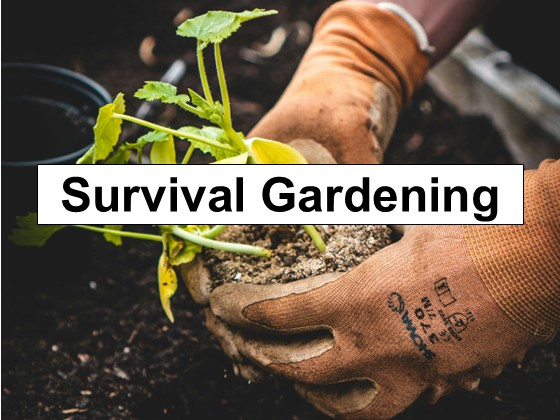If you’re serious about prepping, self-sufficiency is a necessity. When supply chains fail or grocery shelves go empty, your ability to grow your food could be the only thing that keeps your family healthy and fed. The good news is you don’t need acres of farmland to make that happen.
You can turn a small space into a productive produce-growing zone — like a balcony, patio or spare room. With smart planning and the right crops, you can create a steady, reliable source of food at home. It’s all about making the most of what you have and turning every square foot into a survival asset.
Assess Your Space
Start by looking around your home and identifying every spot that could support plant life — your balcony or a spare indoor room. You’d be surprised how much food you can grow using vertical space with shelves, hanging planters or wall-mounted containers. A patio can also double as a garden with smart container setups.
Light and water access are crucial, so focus on areas that get a lot of sunlight and are easy to reach with a watering can or hose. If light is limited, don’t worry. Cool-season crops like broccoli and peas thrive in partial shade and can handle lower temperatures, which makes them perfect for prepping in less-than-ideal conditions.
Choose High-Yield, Calorie Dense Crops
When you’re growing food in a small space, every plant needs to earn its keep. That means choosing nutrient-dense crops that are easy to preserve for the long haul. Start with staples like potatoes, beans and squash. They’re versatile and can last for months when stored properly. Tomatoes are a great option, too, because they offer plenty of flavor and nutrition and are easy to can or dry.
Don’t forget leafy greens like kale, spinach and Swiss chard. These grow fast, can be harvested multiple times and give your meals a big nutritional boost. The key is to pick crops that serve your survival goals while making the most of the space and time you have.
To protect your harvest from unwanted pests, consider using Kaolin clay. This natural, broad-spectrum crop protectant creates a barrier that helps defend your plants against insects, mites and certain diseases. It’s a smart solution that fits well with any prepper’s self-reliant mindset.
For a steady, reliable supply of food, mix fast-growers like radishes, lettuce and greens with long-term producers like squash and root vegetables. This combo gives you quick wins and sustainability, so you never have gaps in your food supply. When you plant for the short game and the long haul, your garden becomes a true survival asset — even in the smallest spaces.
Use Space-Saving Growing Techniques
To grow as much food as possible, you’ll want to explore space-saving growing techniques perfect for prepping. Container gardening is a simple, flexible way to produce anything — from herbs and greens to tomatoes and root veggies. You can move containers around to catch the sun, and they work on balconies and indoors.
Vertical gardening takes things further by letting you grow up instead of out. You can use hanging baskets, wall-mounted planters, stackable containers and sturdy shelving units. These all help you multiply your growing area without extra square footage.
If you’re ready to level up, hydroponics is a powerful method that ditches the soil and grows plants directly in nutrient-rich water. The big win here is that you’re not tied to the seasons. With the right setup, you can grow food all year, indoors or in a controlled environment. That means fresh greens and fruiting crops like tomatoes whenever needed.
Try companion planting — growing crops that support each other — to squeeze more out of tight spaces. For example, plant basil with tomatoes or pair beans with squash. These combinations boost yield, improve flavor and reduce pests while making the most of every inch of your garden.
Build a Planting and Harvesting Schedule
To keep your garden producing all year long, you’ll want to master succession planting. This technique means you’re always planting something new when you harvest a crop, so no space goes to waste. Start with quick growers like lettuce or radishes, then follow up with longer-term crops like beans or carrots in the same container or bed. It’s a practical way to keep a continuous food supply.
Also, don’t skip crop rotation — even in containers. Swapping out different plant families helps maintain healthy soil and prevents pests or diseases from taking hold. With a little planning, you’ll turn your small garden into a year-round food source that keeps your prepping goals on track.
Compost and Reuse Waste
You don’t need a big backyard to start composting. You can create rich, nutrient-dense compost even in tight spaces using the scraps you already have. Toss in fruit and veggie peels, coffee grounds and paper filters to build a steady supply of organic material for your garden.
A small compost bin works great if you have a little outdoor space. However, if you’re working indoors or in a tight area, try a worm bin or bokashi system. They’re compact, odor-free and surprisingly easy to manage.
Small Steps That Lead to Big Yields
Small-space gardening can support your family’s food needs with smart planning and the right crops. Start small, learn as you grow and scale up over time — you’ll be surprised how much you can produce.
[Note: This was a guest post.]

Leave a Reply